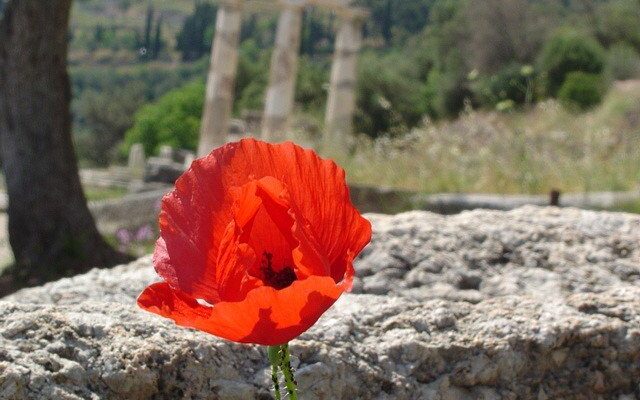Delphi
The legendary temple of Apollo at Delphi is located north of the Gulf of Corinth, at the foot of Mount Parnassus. Both kings and simple peasants came here, to the “navel of the earth”, to ask questions to the famous oracle…

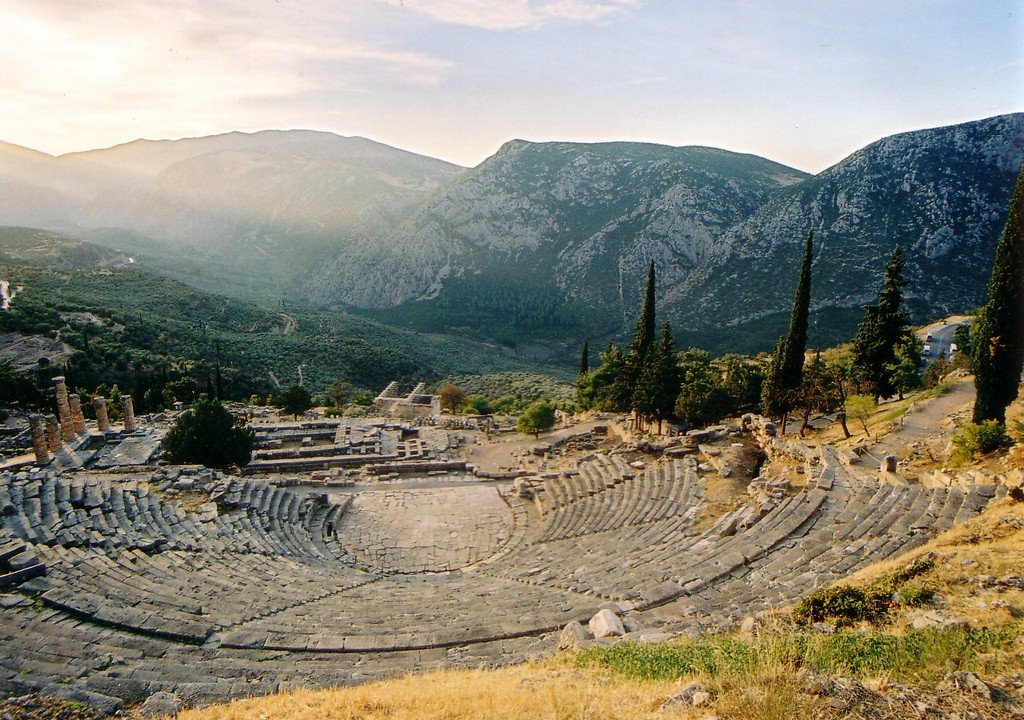
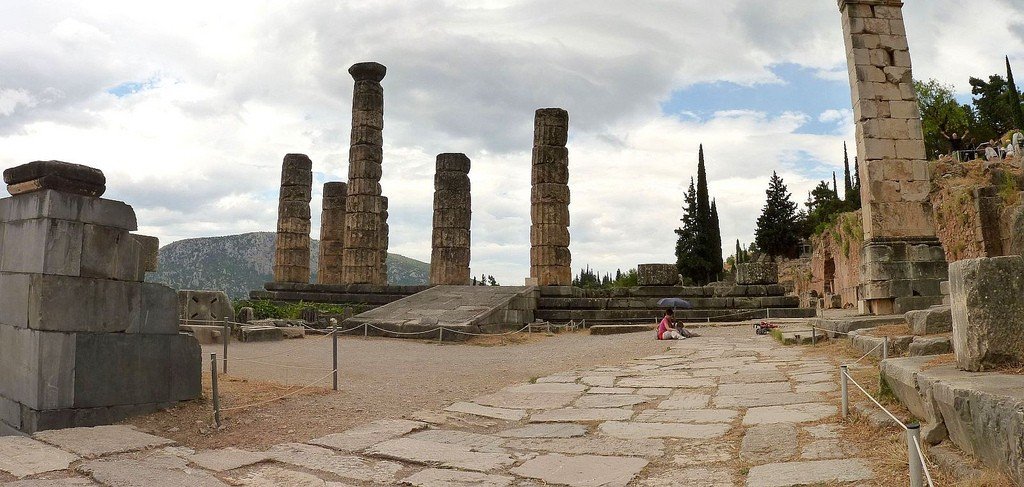
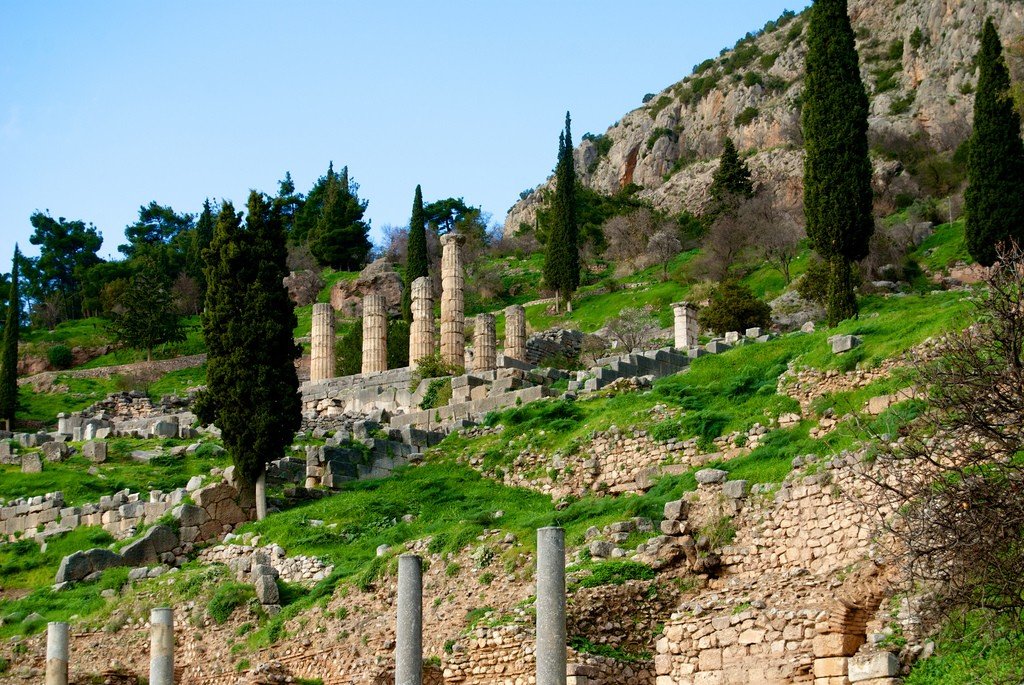
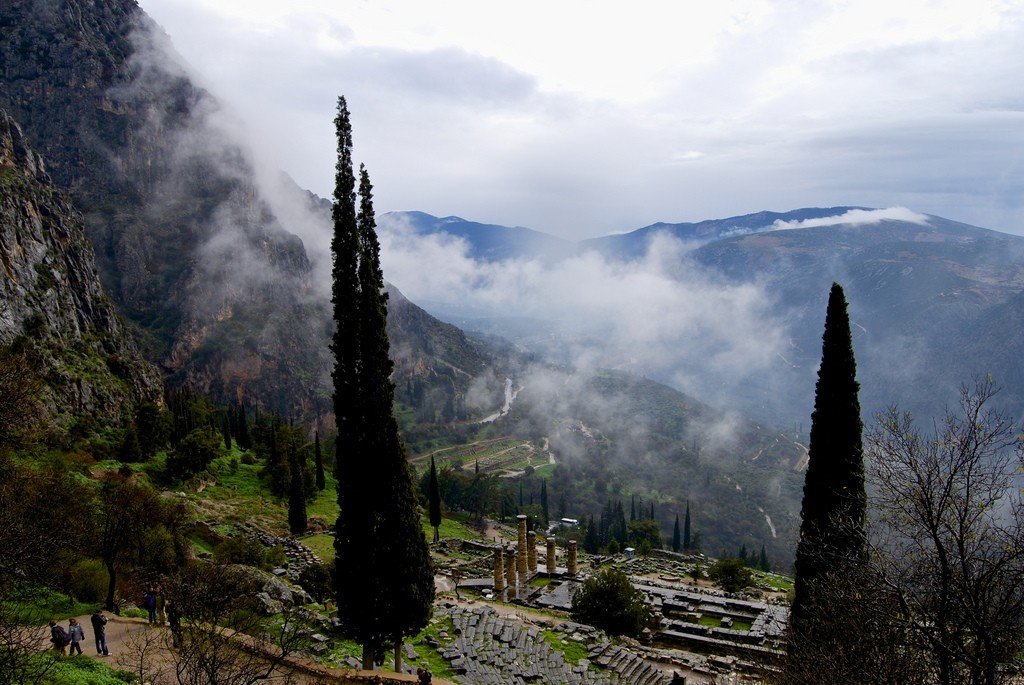
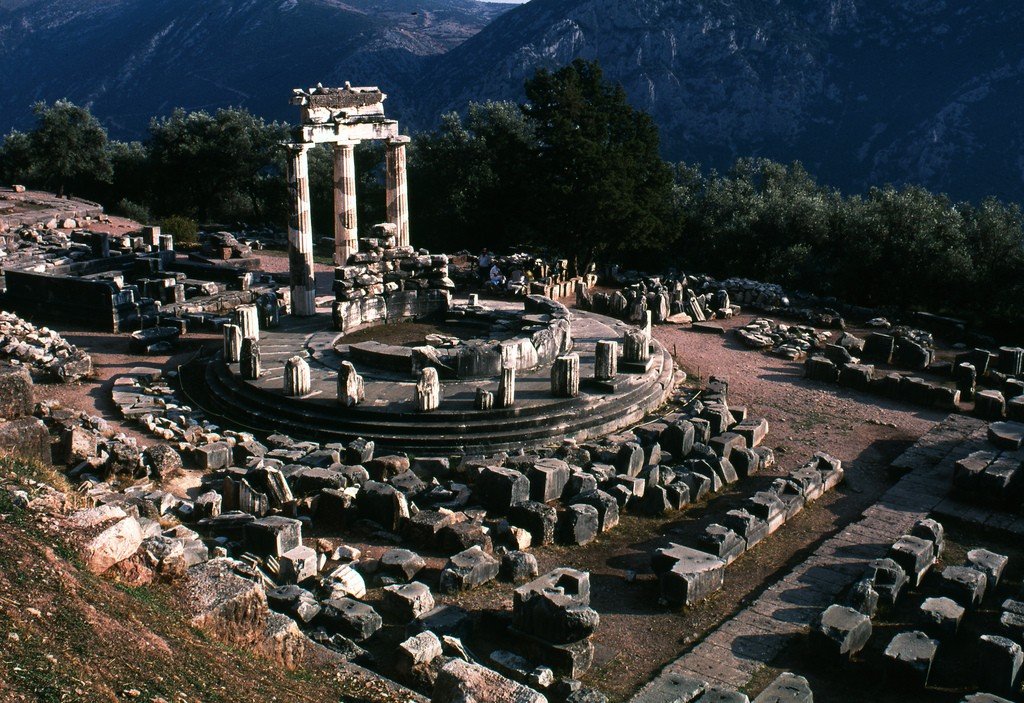
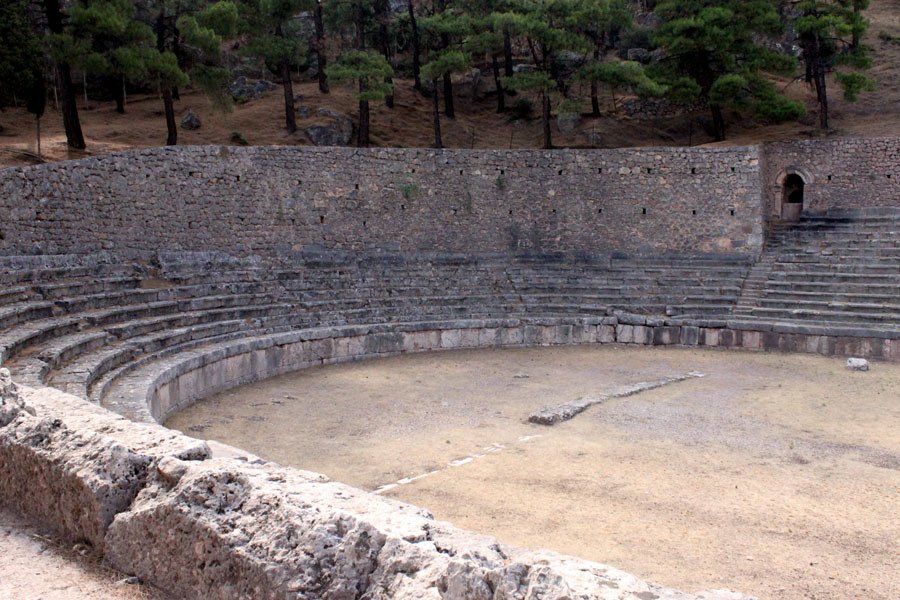
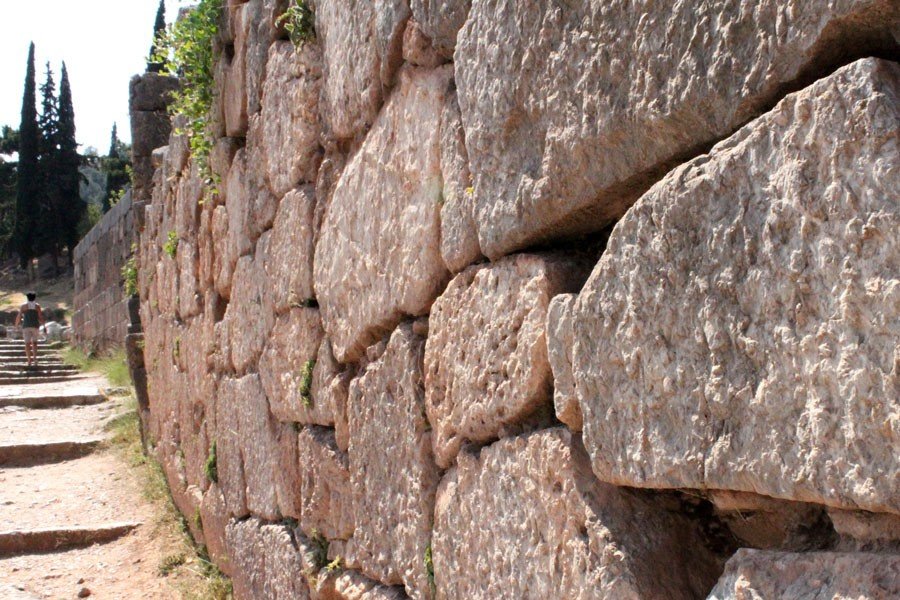
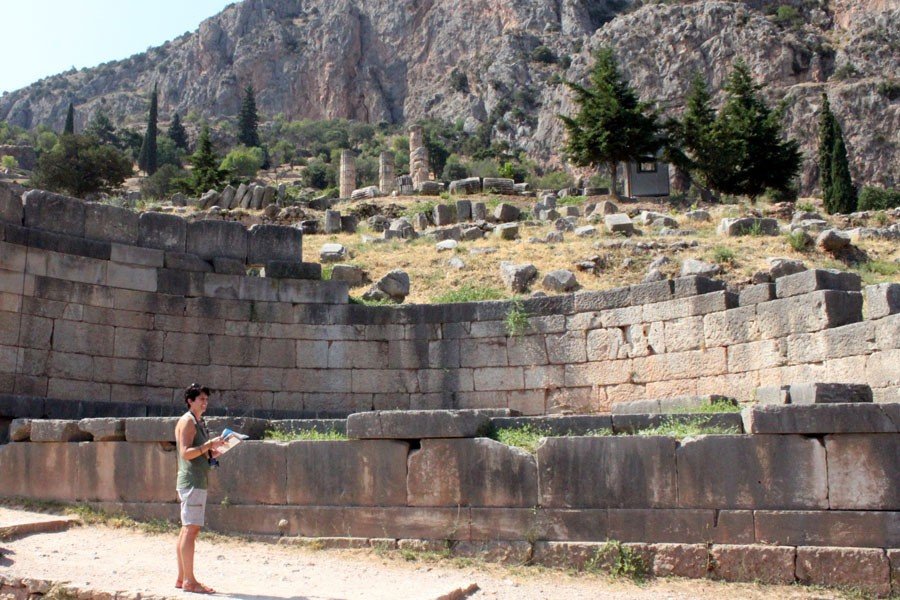
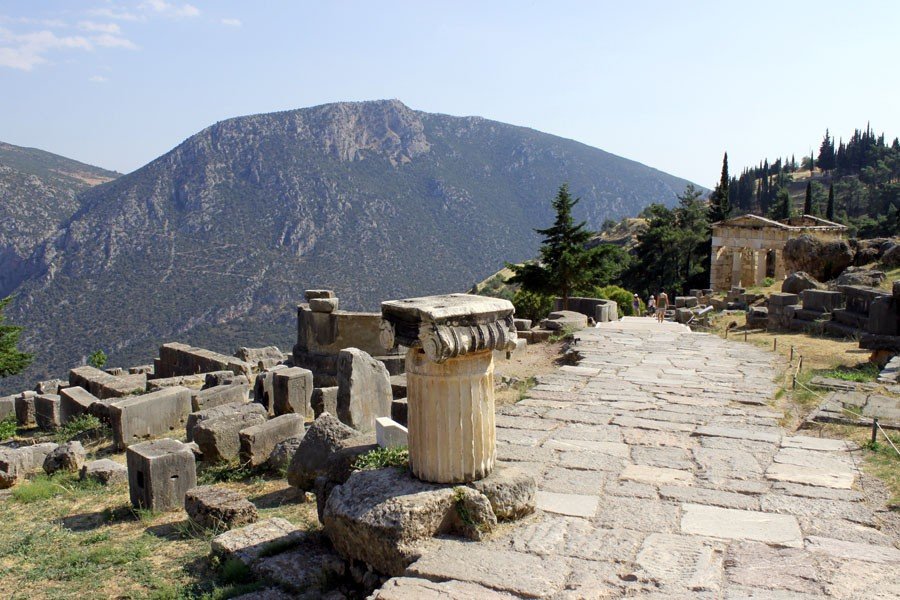
General information
Delphi has been known since the second millennium BC in connection with the cult of Mother Earth, Gaia. In the 8th century BC, their influence increases due to the temple and oracle of Apollo. The temple was built in 548 BC, and since then the cult of Apollo, together with the increasing prominence of his oracle, made Delphi the center of the ancient world, where fortunes and events invariably received their explanation and interpretation.
.Zeus, the father of the gods, personally determined the place that would become sacred to all Greeks. He wished to measure the whole earth and sent two eagles from the ends of the world, and they met on the Pythian rock, Parnassus. This meeting marked that there was the center of the world, the navel of the earth, where the city of Delphi was to be laid.
.
Over the next centuries, Delphi was repeatedly destroyed, both by natural disasters and war. However, the citizens did not lack funds to rebuild their palaces and temples. Rich sacrifices to the gods and offerings to the famous oracle quickly replenished the looted treasury. Divination had always been a very lucrative business, and Delphi continued to prosper well into the Roman period.
.
Apollo founded the Oracle of Delphi. According to legend, he stole Delphi from the Mother of the Earth, Gaia. Apollo’s priestess, Pythia, gave answers on behalf of the god. At the time, Pythia was the only woman who had access to Apollo’s temple. Prophecies were very often vague and could be interpreted in several ways. This was done by a whole staff of priests, sitting at the feet of Pythia and diligently recording her every word. Without the oracle’s advice, no important decision was made, and Delphi influenced almost everything that happened in the ancient world. Only in 394 AD, when Emperor Theodosius, who had adopted Christianity, undertook a persecution of all pagan cults, did the Delphic Oracle fall silent.
.
Around the same time that the temple was built – in 586 BC, the Pythian Games in honor of Apollo began to be held in Delphi every four years. They were second in importance after the Olympic Games in honor of Zeus. Originally, the games consisted of only one type of competition – singing to the accompaniment of the kyphara, a musical instrument similar to the lyre. Later, athletic competitions were added. There were also horse races and chariot races. A huge theater for 5000 spectators and a stadium for athletic competitions were built for the games. The Pythian Games were regularly held every 4 years until they were banned by Emperor Theodosius in 394 A.D.
.
From this time onwards, Delphi fell into a deep decline. The slopes of Parnassus were first cleared of the wild vegetation that covered them only in 1894, when French archaeologists began excavating the site.
.
Chronology
- 8th century B.C.: Apollo became the patron saint of Delphi.
- 548 BC: Apollo’s temple was built.
- 373 BC.
- 373 BC: The temple is destroyed by an earthquake. .
- 330 BCE: Alexander the Great finished rebuilding the temple. .
- 191 BC: Delphi comes under Roman rule. .
- 394 CE: Theodosius’ persecution of pagan shrines, including the oracle. .
- 1893: French archaeologists begin excavations, clearing the hillside for the first time since antiquity. .
- 1938-1941: The Temple of Apollo is partially rebuilt.
- 1987: Delphi is declared part of the UNESCO World Heritage Site.
